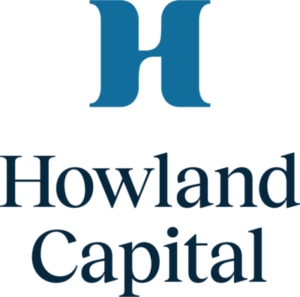A recent survey of professional economists conducted by the Federal Reserve Bank of Philadelphia predicts real GDP will grow at an annualized rate of 7.9% for the second
quarter, following growth of 4.3% and 6.4% in the prior two quarters. At this rate, the economy will likely exceed the broad level of pre-pandemic output reached in 2019.
Forecasts by the Federal Reserve Board released in June now anticipate real GDP growth of 7% for the full year 2021, an increase from 6.5% in March. This level of growth is very strong, but rather predictable given pent-up demand for goods and services following a prolonged and difficult period of pandemic-related restrictions.
Not surprisingly, the strong rebound in economic growth has been accompanied by a sharp rise in prices for many items. Used cars, building materials, and electronic
components, for example, have seen sharply rising prices. The headline Consumer Price Index (CPI) measure of inflation increased 5.0% in May, while so-called core CPI, which excludes food and energy prices, rose 3.8%. Both measures of inflation exceeded most economists’ forecasts and represent the highest monthly increase in 29 years.
Outside of the CPI, there are other signs of inflation; for example, U.S. home prices are up strongly, with the April data showing a gain of 14.6% over the past year, the strongest gain in over three decades. In many areas, home sales are expected to slow in the coming months, simply due to inventory shortages. Given the recent pickup in inflation, investors are focused on the question of whether inflation poses a significant risk to economic growth.
Our view is that the increase in inflation is largely due to transitory factors, not the beginning of a durable trend. Constraints in the labor market, combined with pandemic restrictions, have led to supply chain bottlenecks and created a scarcity of many goods.
At the same time, demand for goods and services has been robust amid fiscal stimulus and economic re-opening. We expect these bottlenecks to ease (as supply catches up to demand) and inflation to moderate. It is also worth noting that recent inflation measures appear stronger due to a lower “base effect.” Since the economy was considerably weaker a year ago, prices for many items were comparatively lower, resulting in a larger increase when measured year-over-year.
However, when measured over a two-year horizon, the headline CPI increased 2.5% in May (versus 5.0% when measured over a one-year horizon.) The Federal Reserve has acknowledged that it is paying close attention to the inflation data. The Fed recently increased its near-term forecast for Personal Consumption Expenditures (PCE), another inflation benchmark, to 3.4% from 2.4%. The Fed has also been referring to the trend in inflation as “transitory,” and forecasts the PCE index falling to 2.1% for 2022. Like the Fed, we are watching the data and the impact on asset prices, but do not expect a sustained 1970s-style inflation shock to the economy.
While the economy has expanded rapidly in the past year, the labor market is recovering more slowly. The unemployment rate in May stood at 5.8%. This level is far below the peak of 14.8% seen at the height of the pandemic in April 2020, but the Fed is not expecting the unemployment rate to surpass pre-pandemic levels until 2022-2023.
Looking at the number of people employed, nonfarm payroll employment is down by 7.6 million from its pre-pandemic level in February 2020. In fact, the labor force has been shrinking, with employees leaving the work force at the highest rate since 2000. Many people are emerging from the lockdown and choosing to spend time away from work.
The scarcity of workers is especially evident for low-wage jobs. Expanded federal assistance benefits has added $300 per week to unemployment benefits and increased the eligibility from twenty-six weeks to eighteen months. These increased federal benefits will expire in September, but about half of the states have decided to end them earlier, citing challenges in filling job vacancies. Broad measures of wage inflation are
running about 2.4%, which is below historical trend. Looking ahead, we will be watching this and other measures of inflation and growth, including likely future changes in tax policy, as they will have implications for monetary policy, economic growth and corporate profitability.

